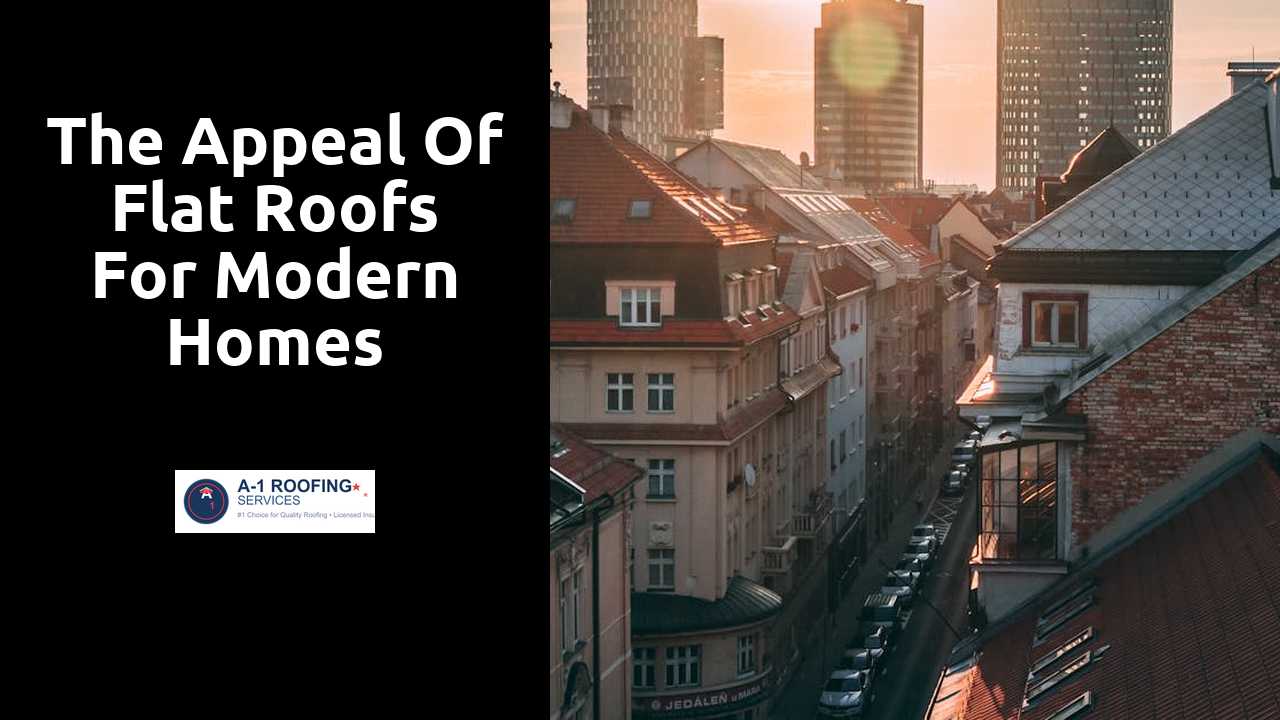
The Appeal of Flat Roofs for Modern Homes
Table Of Contents
Aesthetic Appeal
Flat roofs bring a sleek and contemporary look to modern architecture. Their simplistic design often complements minimalist styles, allowing homes to showcase clean lines and geometric shapes. The absence of pitched roofs contributes to an overall streamlined appearance that can harmonize with urban settings and natural landscapes alike.
This architectural choice provides an opportunity for creative expression through the use of materials and colors. Homeowners can play with various textures, such as wood, metal, or stone finishes. The adaptability in design also allows for innovative outdoor spaces, like rooftop gardens or terraces, enhancing the home's visual appeal and promoting a connection with the surroundings.
This new blog post covers this topic in more detail.
Minimalist and Clean Lines
Contemporary architecture often emphasizes simplicity and functionality. Flat roofs naturally lend themselves to a minimalist aesthetic, creating an unobtrusive silhouette that complements various design styles. This clean approach allows other architectural elements to stand out, highlighting features such as windows or unique materials. The uniformity of flat roofs contributes to a seamless appearance, making them a popular choice among modern homeowners.
Furthermore, the absence of complex rooflines reduces visual clutter, enhancing the overall harmony of a structure. This straightforward design promotes a sense of calm and sophistication, appealing to individuals seeking modern elegance. Flat roofs can support diverse architectural languages, from industrial designs to sleek urban environments, thereby appealing to a wide range of preferences while maintaining a unified look.
Impact on Property Value
Flat roofs have become increasingly desirable in the real estate market, often enhancing the overall value of a property. Their contemporary design resonates well with modern buyers seeking something unique. Features such as energy efficiency and durability further add to their appeal. Homes with flat roofs can stand out in a competitive market, attracting interest from buyers who appreciate innovative architectural aesthetics.
The increase in property value can also be attributed to the versatility that flat roofs provide. Homeowners can utilize the space for rooftop gardens, outdoor living areas, or solar panel installations. These features not only improve functionality but can also lead to substantial energy savings. As more individuals prioritize eco-friendly living and contemporary design, the allure of flat roofs continues to grow, positively influencing property values.
Enhancing Curb Appeal
The design of a flat roof can significantly contribute to the overall aesthetic of a home. Its sleek silhouette offers a contemporary touch that attracts those seeking modern architecture. Clean lines and geometric shapes harmonize with various design styles and enhance the visual appeal of residences. This distinctive look creates a focal point for many homes, setting them apart in neighborhoods filled with more traditional pitched roofs.
Moreover, flat roofs can provide the perfect backdrop for various architectural features, such as skylights or rooftop gardens. These additions not only elevate the home's visual interest but also create inviting outdoor spaces. Potential buyers often find these attributes appealing, as they signal a thoughtful and innovative approach to home design. A well-executed flat roof can boost a property's curb appeal, making it memorable in the eyes of visitors and prospective homeowners.
Climate Adaptability
Flat roofs present unique advantages when it comes to adapting to different climate conditions. In regions experiencing heavy rainfall, a well-designed flat roof incorporates proper drainage systems to channel water away from the structure, minimizing the risk of leaks or water damage. Moreover, the materials used in flat roofing are often engineered to withstand various thermal conditions, ensuring durability through extreme heat or cold.
In areas with significant snow loads, flat roofs can be constructed to resist the accumulation of snow, preventing excessive weight that could compromise the integrity of the building. Additionally, reflective materials can be employed to mitigate heat absorption, making flat roofs particularly effective in warmer climates. This adaptability not only enhances the longevity of the structure but also contributes to energy efficiency, accommodating both homeowners and the environment.
Performance in Various Weather Conditions
Flat roofs are designed to handle different weather conditions effectively. In regions prone to heavy rainfall, a well-constructed flat roof can prevent water pooling through proper drainage systems. The slight slope often integrated into the design directs water toward drains, minimizing the risk of leaks and water damage inside the home. This functionality complements the aesthetic advantages of flat roofs, as homeowners can enjoy a clean line without sacrificing performance.
In areas with extreme heat or cold, flat roofs can also offer insulation benefits. The materials used can reflect heat during the summer months, keeping interiors cooler, while in winter, specially designed membranes can provide better insulation against cold temperatures. Additionally, living roofs, which incorporate vegetation on flat roofs, can enhance energy efficiency further, providing natural insulation and reducing the urban heat island effect.
Related Links
Key Features of Gambrel Roofs for Practical HomeownersExploring the Benefits of Gable Roofs for Your Home